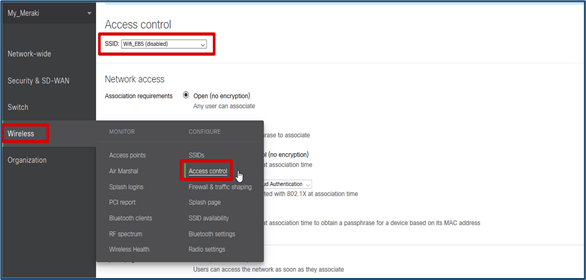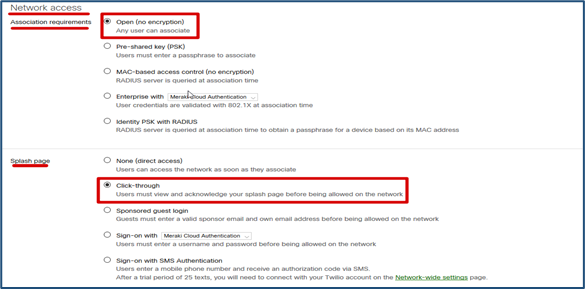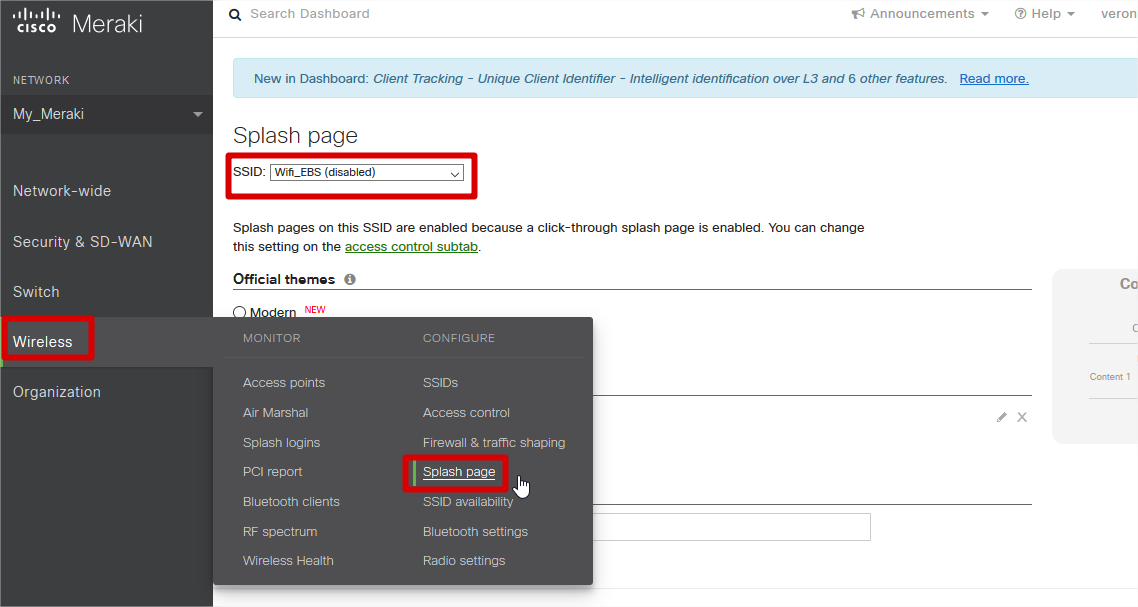Meraki
Welcome to the configuration guide for setting up a Captive Portal with the Meraki access point. This comprehensive guide will walk you through the process, ensuring that you can seamlessly manage and enhance your users’ internet experience while maintaining top-notch security and compliance.
Guest Portal
Captive Portals or Guest Portal is a multi-channel platform that enables you to connect and engage with visitors on your premises.
Guest portal screen page allows to create and design a customizable portal from scratch.
A sample of templates will be given as an option to choose to create a portal, layout will be available as a part of the template.
Following are the steps to configure the Guest Portal.
Captive Guest Portal Configuration
The captive portal is designed with following terms that are described below:
-
Social Authentication: Needs authentication using social platforms as Facebook, Twitter, Linked and it will ask user to authenticate with a valid account.
-
Email Authentication : It will ask the user for their Name and Email address to be able to Authenticate.
-
SMS Authentication: It asks the user for their contact number and authenticate over a SMS.
-
Token Based: A token is generated by the admin. The users get this token when they register and on entering the token as an authentication, they get access to the internet.
-
Username/Password
-
Third party
The following are for custom development and can be integrated as per requirement.
- Third party ERP
- Third party PMS
- Third party POS
- Enter ‘Wireless’ , ‘Access Control’
- Choose the SSID to which the Captive portal will be configured.
- In Network Access, Association requirement, Select ‘Open (no encryption)’.
- In Network Access, Splash page, Select ‘Click-through’.
- In Network Access, Captive portal strength, Select ‘Block all access until sign-on is complete’
- In Network Access, Walled garden ranges, Enter the following domains:
_.kloudspot.com _ .facebook.com _ .facebook.net _ .akamaihd.net _ .fbcdn.net _ .atdmt.com _ .fbsbx.com _. twitter.com \* .twimg.com
You have to separate them only with a space, as shown in the image.
- In the end Save changes.
- Enter Wireless, click on ‘Splash page’.
- Choose the SSID to which the captive portal will be configured.
- On ‘Splash page’, Custom splash URL, enter the url below;
https://mx01.kloudspot.com/cp/lacomer/index.htm
- Save changes and Exit.
For more details on how to create template and workflow driven portal, please refer to the relevant Kloudspot documentation.
Kloudspot Campaign Management
Kloudspot has a powerful workflow and policy driven campaign management solution centered mostly around Wi-Fi which offers both online and offline campaigns. These online campaigns can be created and managed using Captive Guest Portals. Creation of Captive guest portals is extremely easy using one of many templates supported by KloudCampaign Editor. KloudCampaign Editor can help guide the user to create a captive portal for the hardware they have deployed on the network.
For more details on how to create Campaigns, resources and configure dynamic policies and workflows, please refer to relevant Kloudspot documentation.




